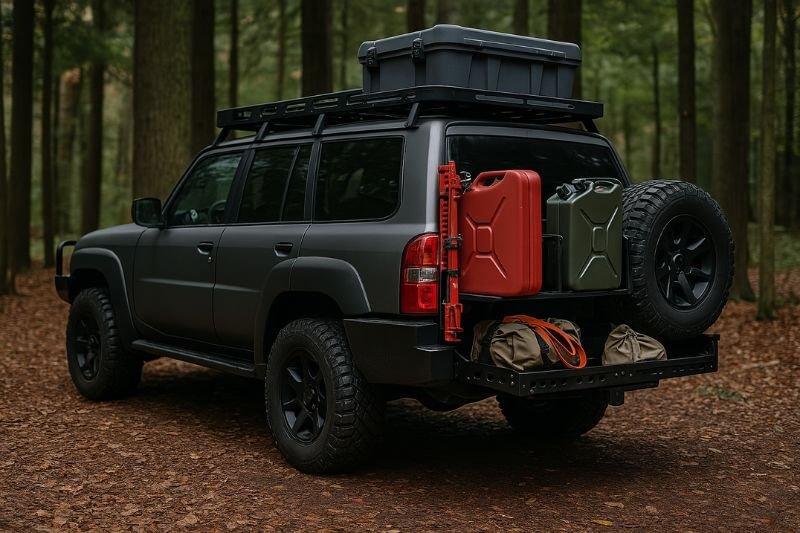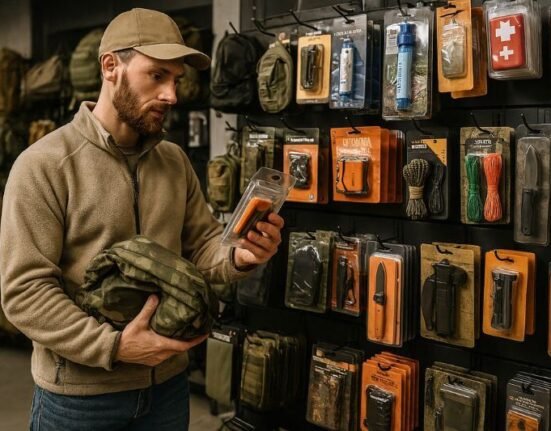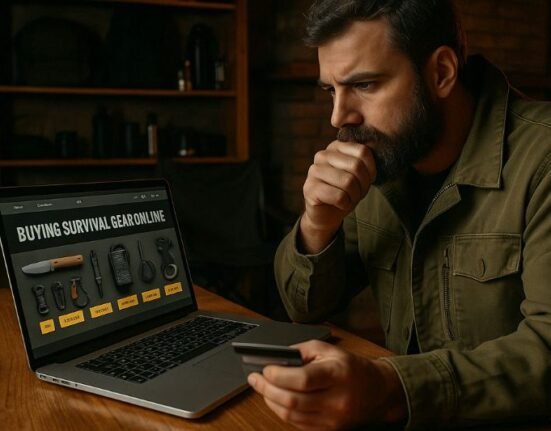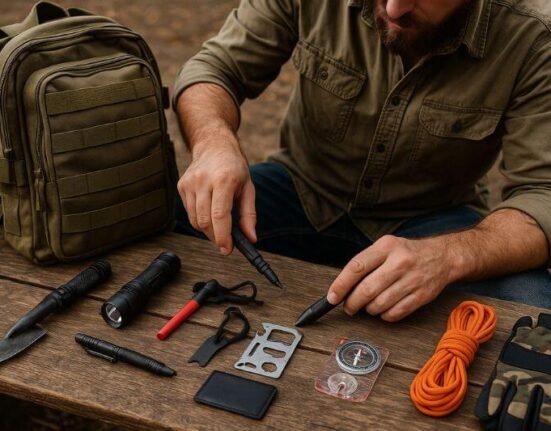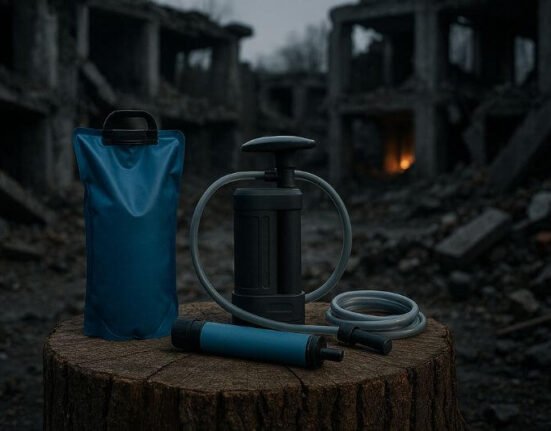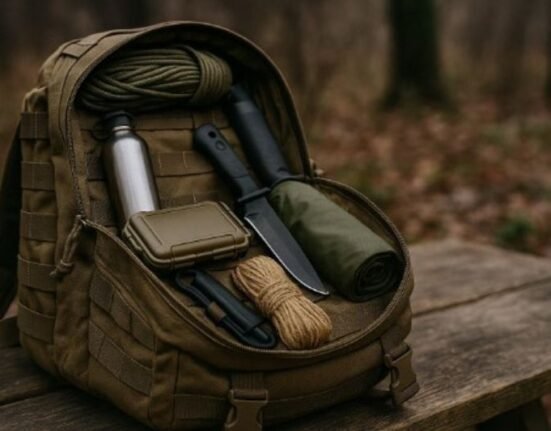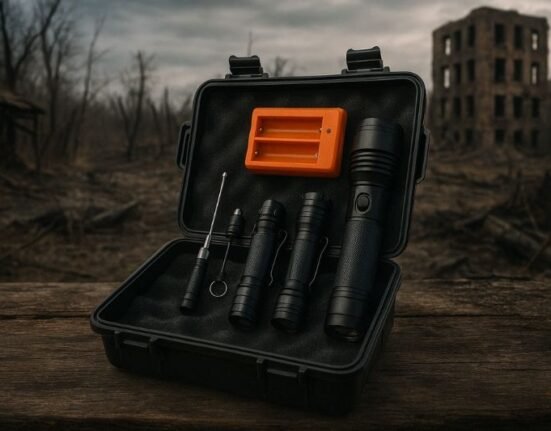When chaos erupts and the clock is ticking, your bug out vehicle can mean the difference between escape and entrapment. Whether you’re facing civil unrest, grid failure, or a fast-moving natural disaster, having a capable and ready vehicle isn’t a luxury — it’s a core element of survival.
This guide breaks down what makes a true bug out vehicle in 2025: from essential features and best vehicle types to gear storage, off-road capabilities, and real-world escape strategy.
Why You Need a Dedicated Bug Out Vehicle
Your daily commute car might get you to work — but will it get you across a flooded back road, through a blocked city, or 150 kilometers off-grid?
“In survival, mobility is freedom. Your vehicle is your lifeline to reach safety before the rest of the world catches up.” — Off-Grid Mobility Field Manual, 2024
A true bug out vehicle is:
- Always ready to go
- Loaded with essential gear
- Capable of handling rough terrain
- Stealthy or intimidating, depending on your context
- Designed for autonomy — no outside support needed
1. Must-Have Features of a Bug Out Vehicle
Before choosing your rig, make sure it meets these core survival requirements:
🛠️ Essential Capabilities:
| Feature | Why It Matters |
|---|---|
| 4WD / AWD | Critical for mud, snow, unpaved roads |
| High clearance | Prevents damage from rocks, logs, debris |
| Cargo space | Enough for people + gear for 72–168 hours |
| Fuel range | 500+ km per tank ideal; room for extra cans |
| Durability | Can take abuse and keep moving |
| Low profile | Doesn’t attract attention unless designed for defense |
🧠 Optional add-ons: winch, light bar, roof rack, snorkel, locking differentials
2. Best Vehicle Types for Bugging Out
There is no “one-size-fits-all” option. The best bug out vehicle depends on your terrain, family size, gear, and bug out plan.
🚙 Top Bug Out Vehicle Categories:
| Type | Pros | Cons |
|---|---|---|
| Mid-size SUV | Balance of comfort, off-road, fuel efficiency | Limited cargo space |
| Pickup Truck | Cargo + mods possible, off-road capable | Less secure gear storage (unless locked) |
| Van (converted) | Stealth, interior space, modular storage | Limited clearance |
| Jeep 4×4 / Wrangler | Rock-solid off-road, small and agile | Small fuel tank, high visibility |
| Overland Rig | Pre-built for survival; fully off-grid ready | Very expensive, needs maintenance |
| Motorbike / Dual Sport | Agile, fuel-efficient, stealthy | No shelter, no cargo for group or family |
📌 Pro tip: Blend reliability with flexibility. A used 4×4 with basic upgrades can outperform an untested “tactical” truck any day.
3. Prepping Your Bug Out Vehicle: The Basics
Once you choose the right vehicle, it’s time to turn it into a mobile survival hub.
🔧 Maintenance Checklist:
- Full mechanical check: brakes, belts, fluids, tires
- Oil and filter change every 5,000 km
- Rotate and inspect tires regularly (include full spare)
- Battery in good condition + jump starter in vehicle
- Headlights, wipers, and signals functional
- Test drive monthly with full bug out load
🧠 Never let your fuel drop below 70 %. In a crisis, every liter counts.
4. Interior Gear Setup: Organized, Fast Access
Your vehicle isn’t just for transport — it’s your supply module.
🧳 Gear Zones (Sample Layout):
| Zone | What Goes There |
|---|---|
| Front Cabin | Map binder, flashlight, comms, emergency docs |
| Back Seat | Medical kit, food packs, water bottles, warm gear |
| Trunk/Bed | Shelter, stove, fuel, spare clothing, tools |
| Roof Rack | Water jugs, fuel cans, tarps, recovery gear |
| Hidden Compartment | Backup weapon, comms, gold/silver stash |
🎯 Label all gear bags by color or tag (e.g., RED = medical, BLUE = food, BLACK = defense).
5. Onboard Survival Kits: What to Store Inside
Your bug out vehicle must be more than a ride — it’s your rolling lifeline. That means carrying redundant, reliable gear for 72–168 hours of autonomy.
🚨 Must-Have Onboard Gear:
🧭 Navigation & Comms:
- Laminated maps (primary + alt routes)
- Compass + GPS (offline)
- Two-way radios (GMRS or FRS)
- Emergency beacon or signal mirror
🛠️ Tools & Repair:
- Multitool, hatchet, folding saw
- Tire patch kit, jump starter, spare fuses
- Duct tape, zip ties, paracord
- Hydraulic jack + tire iron
🍲 Food & Water:
- 3-day food supply minimum (freeze-dried + rations)
- 10–20 liters of water in BPA-free containers
- LifeStraw or Sawyer filter + purification tablets
🩺 First Aid:
- Trauma kit + basic meds (ibuprofen, antibiotics)
- Israeli bandage, tourniquet, gloves
- Aloe, burn cream, allergy meds
🔥 Shelter & Warmth:
- Tarp, bivvy bag, emergency blanket
- Wool socks, gloves, jacket layers
- Butane stove + small pot/pan
- Wet wipes + toilet paper
✅ Store kits in MOLLE pouches, color-coded bags, or stackable crates.
6. Stealth vs. Strength: Two Survival Philosophies
Your bug out vehicle should match your survival environment and philosophy. In short: should it blend in or stand out?
🕶️ Stealth Vehicle Build:
- Civilian-looking (no tactical stickers or lights)
- Neutral colors (gray, tan, forest green)
- Blackout curtains for windows
- No weapon mounts visible
- Interior sleeping platform or foldable setup
When to go stealth: Urban escape, martial law, checkpoints, hostile population density
🛡️ Tactical / Strength Build:
- Roof rack with jerry cans, spare tires
- Winch, snorkel, skid plates
- Emergency lighting, reinforced bumpers
- Visible prepper signage (if deterrent is the goal)
When to go tactical: Remote bug out zones, deterrence in lawless regions, off-road escape routes
💡 Some preppers own two vehicles or two setups — one for stealth, one for force.
7. Fuel Management and Range Optimization
Your vehicle is only as useful as your fuel range allows. In a collapse, fuel stations become either empty or unsafe.
🔋 Fuel Strategy:
- Keep tank above 70 % at all times
- Carry at least 2–3 jerry cans (20L each)
- Use stabilized fuel if storing long term
- Know your vehicle’s actual range under load
| Load Scenario | Range Impact |
|---|---|
| Light load, highway | Max efficiency |
| Heavy load, stop-start | -20 to -30 % range |
| Off-road terrain | -40 to -50 % |
🧠 Note: Diesel stores longer than gasoline, and vehicles with manual transmissions tend to be more fuel-efficient in emergencies.
8. Matching Vehicle to Environment: Climate & Terrain Considerations
Choose or prep your bug out vehicle according to where you live or plan to escape to.
🌎 Environment-Based Adjustments:
| Environment | Must-Have Vehicle Features |
|---|---|
| Desert | High airflow intake, window tint, water storage |
| Mountains | Torque over speed, tire chains, brake check |
| Forest | Narrow profile, high clearance, tow points |
| Snow/Ice | Snow tires, shovel, sandbags, heater backup |
| Flood-prone | Raised air intake (snorkel), water seal kits |
✅ Always keep climate-appropriate gear: wool blankets in cold zones, solar showers in hot zones, insect netting for swamps or jungle regions.
Internal Links to Complete Your Bug Out Strategy
- 🔗 Bug Out Strategy: Plan, Execute, Survive
- 🔗 Bug Out Route Planning: Mistakes to Avoid
- 🔗 Top 25 Survival Supplies Every Prepper Needs
- 🔗 Family Bug Out Planning: Elderly & Kids
9. Scenario: Escaping Collapse in a Bug Out Vehicle
Let’s imagine a real-world bug out scenario using a properly prepared vehicle.
⚠️ Scenario: Urban Blackout + Rising Unrest
It’s 5:45 PM on a weekday. A regional power outage has triggered traffic chaos, mass confusion, and disrupted comms. After monitoring shortwave radio and seeing signs of breakdown, you initiate your Phase 2 bug out.
- You grab your pre-packed bags, alert your team, and head to the vehicle.
- Your 4×4 SUV is topped up with fuel, has 40L in extra jerry cans, and a rear compartment stocked with food, water, and shelter gear.
- GPS is down. You switch to printed route maps (Route Bravo), avoiding highways and moving along forest service roads.
Along the way:
- You hit a roadblock — abandoned cars and looters nearby. You detour using your CalTopo-marked side road.
- Your portable air compressor helps repair a slow leak at km 70.
- By nightfall, you’re 70 km out, in the hills, and setting up temporary camp.
🧠 Takeaway: Prep, gear, and planning turned panic into controlled mobility.
FAQ: Bug Out Vehicle
What’s the best vehicle type for bugging out?
There’s no single answer. It depends on your location, family size, and terrain. That said:
- A 4×4 SUV or pickup truck is often best for versatility.
- Vans offer stealth and indoor shelter.
- Dual-sport motorbikes are fast, agile, but limited in gear.
Avoid sports cars, low-suspension sedans, and electric vehicles without backup charging.
Should I sleep in my vehicle or bring a tent?
If stealth is a priority, sleeping inside your vehicle is safer and faster to set up. Use window shades or blackout curtains.
For longer stays or with family, a tarp shelter or tent offers more comfort but requires concealment strategy.
Can I convert a regular vehicle into a bug out rig?
Absolutely. With:
- All-terrain tires
- Roof rack
- Cargo storage system
- Fuel can mounts
- Portable stove + water kit
- Blackout window film
You can transform almost any vehicle into a capable bug out platform.
What’s the most overlooked prep for bug out vehicles?
Maintenance. Even the best rig fails if:
- The battery is dead
- Tires are flat or dry-rotted
- Fuel is old or unstable
- The brakes fail under load
✅ Tip: Treat your bug out vehicle like a second home. Inspect monthly, and rotate supplies like food, water, and meds every 6 months.









